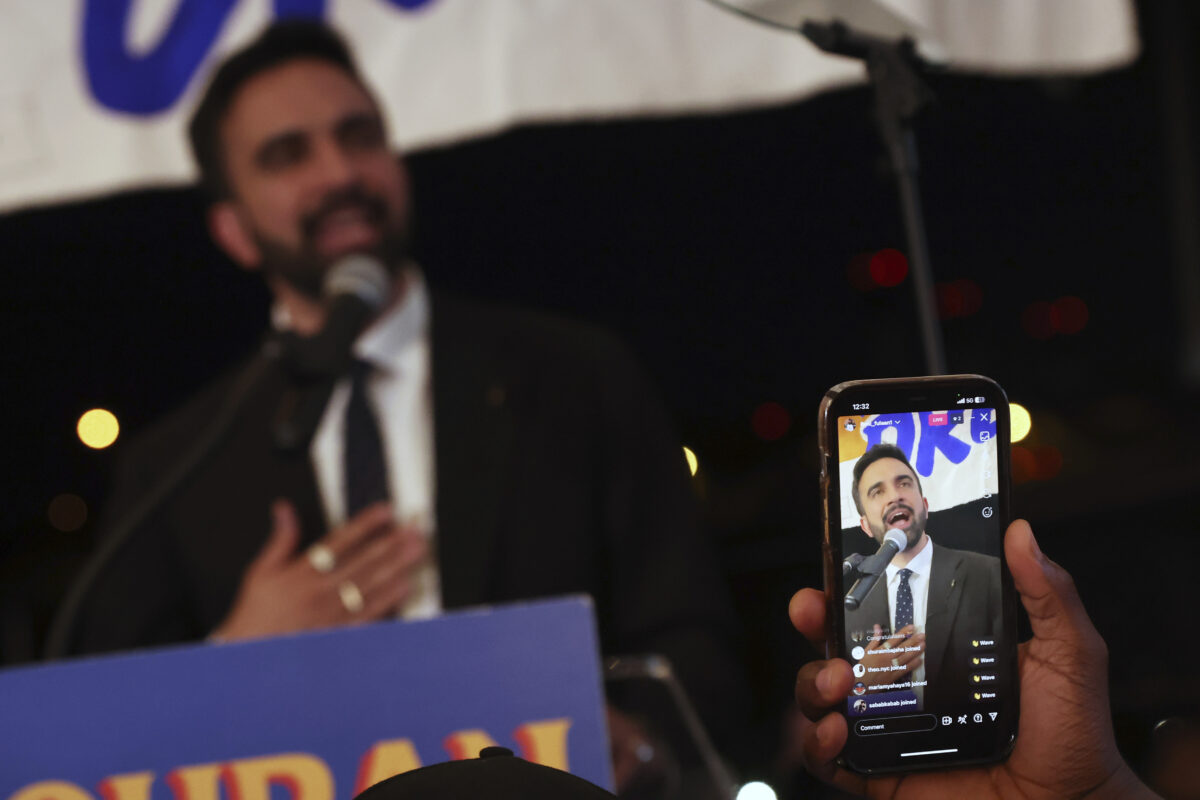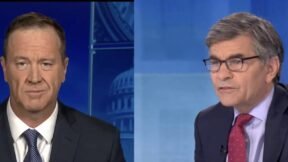Zohran Mamdani’s Win Shows the Power of an Extremely Online Campaign

Democratic mayoral candidate Zohran Mamdani is recorded by supporters while he speaks at his primary election party, Wednesday, June 25, 2025, in New York. (AP Photo/Heather Khalifa)
Two days after 33-year-old state assembly member Zohran Mamdani won the Democratic mayoral primary in New York City, his win is still sending a jolt through the city’s political class. A self-described democratic socialist is now the front-runner to become mayor of America’s largest city — and he did it without relying on the traditional tools of political influence.
There was nothing normal about this campaign. Tuesday night marked a paradigm shift, powered by viral Instagram reels, subway platform town halls, and a blunt rejection of establishment politics. And it worked.
Heading into the race, many assumed Andrew Cuomo had it locked up. The former three-term governor had name recognition, a massive donor network, and the lingering support of a political machine that has dominated New York for decades.
His comeback campaign, after resigning in disgrace in 2021, was backed by Fix the City — a super PAC led by one of his closest advisers — that poured in $25 million, along with endorsements from former Mayor Mike Bloomberg and former President Bill Clinton. It was pitched as a return to serious leadership after years of chaos.
But Mamdani flipped the script.
This race was won by a new kind of infrastructure: one built on social media fluency, neighborhood organizing, and an understanding that today’s voter scrolls before they vote. Mamdani’s media strategy wasn’t complex; it was nimble, attention-savvy, and often funny.
He appeared on SubwayTakes, a popular TikTok interview show, riffing on transit policy while riding the Q train. He filmed himself walking the entire length of Manhattan — from Inwood to Battery Park — just to meet voters. He did the Polar Bear Plunge in Coney Island in January and turned it into a TikTok punchline: “I’m freezing… your rent.”
By contrast, Cuomo’s campaign leaned on the traditional levers of power but failed to meet the moment. He largely avoided local media and offered few viral moments or personal outreach efforts, instead holding closed-door fundraisers and making calculated appearances that often felt stiff or recycled.
Inevitably, Mamdani’s messaging bordered on gimmicky at times. But that didn’t seem to matter. His appeal came in large part from his relatability, especially coupled with Cuomo’s inaccessibility. He lives in Astoria. He rides the subway. He uses social media the way a friend might — casually, with humor, and without overproduced polish.
He doesn’t come off as scary or extreme, no matter how hard his critics leant on Islamophobia to make him seem that way. He’s disarming. He talks about housing the same way he talks about meeting his wife on Hinge. That kind of presence cuts through.
Other Democrats seem to be taking note of this strategy as well. Pete Buttigieg recently appeared on Flagrant, the loose, unfiltered comedy podcast hosted by Andrew Schulz. Schulz himself noted Buttigieg “doesn’t talk down or finger wag.” Rather, he “meets you where you are emotionally.”
Regardless, it does remain unclear how Mamdani plans to fund many of his core proposals. Free buses, city-run grocery stores, and rent freezes sound great, but the details are sparse, and the math remains fuzzy.
But here’s the wild part: the budget might not even be the point. While national politics spiral into spectacle, voters in New York appear increasingly focused on more immediate, tangible frustrations: rent, groceries, transit. They’re not just tired of the noise in Washington, but rather the daily expenses of life in the city.
For many, it’s not about whether the numbers add up right now — it’s about the sentiment. It’s about someone finally naming the problem, even if the solution isn’t fully priced out.
There is a hunger for someone who actually gets it — someone who’s from the city, not someone like Cuomo, who only recently rented an apartment on the Upper East Side after years away from New York life. There’s fatigue with politics that revolve around scandal and ego. For many voters, Mamdani didn’t just offer policies — he offered a feeling.
“I think it’s time for somebody young, a person of color, something different,” 28-year-old Ignacio Tambunting told Reuters outside a Manhattan polling station. Another voter, 39-year-old Leah Johnson, said she ranked Mamdani first despite worries he was too liberal, but refused to rank Cuomo at all.
If this is the new Democratic blueprint, it raises real questions about how candidates are evaluated: What counts as political capital? What replaces traditional endorsements? Does online fluency now outweigh legislative experience?
Mamdani’s campaign didn’t have all the answers. But it did clarify that it’s not just credentials and endorsements that matter, but a candidate’s ability to connect online. A viral clip may reach more voters than a televised debate, and authenticity on a podcast might carry more weight than a photo opportunity with a party elder.
If his win showed anything, it’s that Democrats should be paying close attention to the clear proof that voters want politics, especially in a city as battered and expensive as this one, to feel human again.
This is an opinion piece. The views expressed in this article are those of just the author.




